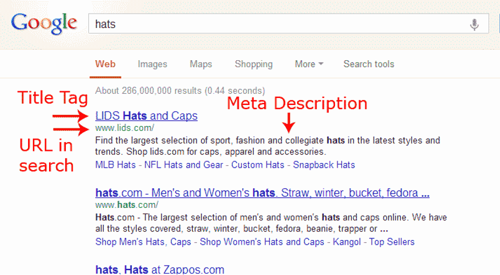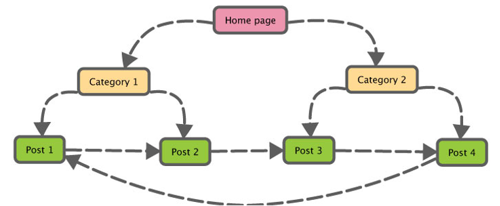A guide to improving your site’s SEO: Part One - Content
Search Engine Optimisation (SEO) can be a challenge, even a dark art. However, as a website owner or digital marketer, there is an overwhelming number of relatively simple things you can do to enhance your site’s search engine performance.
With no shortage of generic articles and blog posts about SEO that give advice like ‘write relevant content’, we wanted to provide some more detailed and useful insights.
We have spent time trying to simplify SEO advice, provide useful resources and distil general best practice into short and actionable tips you can do in an hour or less. We’ve also outlined some practices you can build into your content creation process that will help your site perform better.
One of the best places for genuinely useful tips is Google’s own development blogs and knowledgebase.
1. Focus on the user's search intent
Search intent is the purpose behind every online search. Meeting user’s search intent has become increasingly more important to Google, and it is something that will massively impact your site’s search ranking.
Most search intent can be broken down into four broad categories:
- Informational – Users are looking for specific information about a topic.
- Navigational – Users are looking for a specific website or app, like ‘Amazon’ or ‘BBC’.
- Commercial – Users are looking for products and/or services but have not made their minds up yet.
- Transactional – Users are looking to make a purchase. The decision has already been made what to buy, they are just trying to find somewhere to buy it.
It can be a useful exercise to review your own website and consider how it meets the needs and search intent of your users (customers).
2. Identify your keywords – target a topic
Carrying out keyword research is an essential part of SEO. For pages to perform at their best and get the maximum visits, your content has to target the right people. There is no point in trying to target an audience that does not exist, or even worse, miss an audience that does.
You can use Google’s Keyword Planner to help you identify the most effective use of keyword.
Every topic has a small number of the most popular, standout words. You should include these ‘target’ keywords in your page title, page header (h1) and your page URL if possible to maximise the impact they have on your search ranking.
It is also worth thinking about the contextual semantics of searches.
For example, someone who is looking for spontaneous directions on a mobile phone may carry out a voice search using the phrase such as ‘Give me directions to Abacus Financial in Watford’. A user who is planning travel ahead from a laptop might google for ‘Abacus Financial Watford address’.
In the past, some less ethical search specialists used a technique called ‘keyword stuffing’ - it remains important that the written word is natural and readable otherwise pages could find themselves subject to a Google penalty.
3. Set up Google Analytics and Search Console
There is no point in making an effort to ensure your site performs well on search if you have no means of measuring your success. Configuring Google Analytics and Search Console will help you to see the effects your changes are making, and any issues that are outstanding on your site.
You’ll need a Google account to get started with this.
Once you’ve set these up, you’ll be able to more easily assess which pages and features on your website are performing less well.
4. Write descriptive meta information
Page titles and meta descriptions are arguably the most important elements on your website’s pages as they are crawled, stored by bots and are used to create Google search results. There's no hard rule that Google will use your meta information to feed the titles and descriptions when returning a search result but in practice it does 99% of the time.
It's certainly true that not having titles and descriptions makes it difficult for Google to provide good results. This means that you will suffer a penalty combined with a less effective result as Google will try to artificially create a result text from the contents of the page which invariably is not very user friendly.
Search results are the first glimpse of your brand and as such, it is worth spending some time working on effective and engaging ‘microcopy’ to stand out from other results.
Make sure all of your pages have titles that are a maximum of 60 characters, and descriptions that are between 50-160 characters. Both should be accurate, descriptive, meaningful and not generic, waffly or irrelevant.
At this stage, it may also be worth re-writing content in line with keyword research or creating new content to address user needs that have been identified during research.

Source: inMotion Hosting – What are meta tags?
5. Use short and descriptive URLs
Your Content Management System (CMS) should provide the option to customise URLs (web address) of each page on your website. In the past websites that had dynamic URLs tended to perform less well, although if you read Google’s own documentation they say this is primarily because they are less readable and therefore ‘clickable’ than formatted or static URLs.
Making your URLs short and to the point can give a nice little boost to your site’s search performance. Long URLs can put users off visiting your site, so it’s best the cut out unnecessary words and just keep the important ones.
For example:
Not so good:

Better:

Source: ahrefs Blog – 12 SEO Best Practices That Everyone Should Follow
6. Optimise your images (and other ‘assets’)
An element of SEO that is easy to overlook is the page size. The time it takes for your pages to load is critical to how well your website will rank on a Google search.
The most common reason for pages to load slowly is unnecessarily large images, video or other media. As such, it’s important that you make an effort to resize and optimise media wherever possible. Usually, this can be done in an image editor like Photoshop or sometimes in your CMS.
We like to use TinyPNG to optimise our PNG and JPG files before we upload them to our website and suggest you should do the same!
Tools such as Google Lighthouse can provide useful technical information about page size including whether code assets are minified (made smaller).
We’ll cover more technical tools and techniques for making smaller, faster-loading pages in Part Two of this post.
7. Fix any broken links
Links that lead to pages that have been removed or do not exist are a big no-no in the eyes of Google. It’s not useful for users and damages the credibility of your site, as well as its search ranking. Luckily, there are some easy to use, free tools that can help you identify any broken links present on your site.
The Broken Link Check tool will scan your site and report any broken links, where they were found and where they lead to. Diarising and carrying out a quarterly check using this tool will allow you to keep on top of any broken link issues and will give your site the best chance of performing well on search results.
8. Add internal links throughout your site
A simple way of promoting more traffic and activity within your site, and better performance on search results, is to include internal links with relevant anchor text to your content. This means linking to other relevant pages on your site within your site content. Over time, adding more content and more internal links creates a web across your site of relevant, intertwining content that engages the user and promotes them to say on your site for longer.

Source: Neil Patel’s Guide to Internal Linking
9. Make sure your images have ‘alt’
Alt stands for ‘alternative text’ and is a description that appears in place of an image on a webpage if the image fails to load on a user's screen. This text helps screen-reading tools describe images to visually impaired readers. Hubspot
Adding descriptive alt text to your images not only serves to improve accessibility for users that have disabilities, but it also helps Google to crawl and rank your website which can lead to more of your website’s images appearing in image search results.
10. Make sure you structure your website and content sensibly
When you are creating content for your site, you should approach it the same as you would a professional document: logically and with consideration to making sure the most popular content is clearly accessible from the homepage.
Individual pages should have just one main heading (h1), and the remaining headings (h2-h6) should be structured (and nested if necessary) in a way that is logical. Similar to alt tags, headings improve accessibility for human users accessing the site with assistive technologies, and also robots, which crawl your site pages and analyse the content to create a search index.

Source: w3.org – Headings Web Accessibility Tutorials
Conclusion – Part One
Researching, creating and preparing content for your website is no mean feat, and in fact, is one of the most critical and yet underestimated ingredients in a successful web project.
Taking time to understand your audience and their contextual needs, and providing content in an easy-to-use and accessible way will result in a site that results in more satisfied visitors and increases the rate of those who return.
Website user experience starts well before arriving on the website: what you choose to communicate in your search result snippets (via meta information) has a big effect on the number of people clicking through to your website.
Already sorted your content out? Check out Part Two of our guide for some technical tips.

